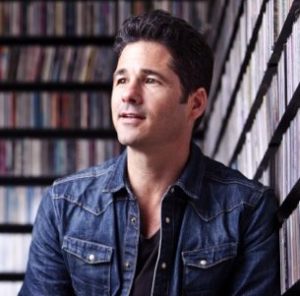Sound and Background Music in Retail Stores
November 27, 2017
 By Dean Cherny, EO Australia-Victoria member and Managing Director at Marketing Melodies and storePlay.
By Dean Cherny, EO Australia-Victoria member and Managing Director at Marketing Melodies and storePlay.
We all go shopping. Some of us try to limit our shopping time to the obligatory grocery run, others browse all the latest collections for a hobby.
We have one undeniable thing in common though: we are all influenced by the many sensory cues we receive while shopping.
In this article, we will have a look at the processes at work, with a particularly strong focus on sound and music.
As we have covered in our previous article on the influence of sound in hospitality, we constantly receive an overload of sensory input. To make sense of all this, we make a mental summary of sorts. We try to make a highlight reel of reality, to keep it all manageable.
This highlight reel does not necessarily reflect a correct representation of reality, and certainly (by definition) not a complete one.
A good formula manager can design a shopping experience that puts the focus on the right elements, resulting in a beneficial highlight reel. Beneficial to the shop, in maximising sales. And beneficial to the shopper, in maximising pleasure and simplifying the journey.
So how does music come in?
First of all, music has a major impact on how we perceive the passing of time. Simplified, our subconscious judges time by sensory input. A lot of input, must mean a lot of time has passed.
Musically speaking, faster, louder and more complex music equates to a higher sensorial load. So playing faster music, makes it seem as though more time is passing. So if your customers have to spend some time waiting in line, make sure soft, slow music is playing.
Interestingly, logic would dictate that no music would be even better. Studies, however, show an inverted bell curve of sorts. Both silence and fast, loud music make waiting times seem longer, with soft, slow music forming the sweet spot in between.
A different perception of time, leads to different behaviour as well. Slower, softer music tends to keep people in your shop for longer. In fact, a benchmark study proved that customers spent 15% more time in a shop, when slower music was playing. Perhaps even more important: they spent over a third more, money-wise, in this extra time.
Slower, softer music tends to keep people in your shop for longer.
So music tempo and volume should always be in line with your formula; are you trying to serve as many clients as quickly as possible, then go for fast and loud music.
Trying to maximise sales per customer? Slow and soft is the way to go.
Time perception is one thing, quality perception is another crucial factor in retail.
Communicating a clear and coherent image, leads to a more positive evaluation by the customer, and ultimately to more sales. If you are a budget retailer, offering the lowest possible prices. It is crucial to ensure that you communicate this position not just visually, but also in scent and music.
As it turns out, the more complex music is, the higher the quality image it exudes. Makes sense right? Jazz and classical are typically quite complex, and they suit more up-market businesses.
Jazz and classical are typically quite complex, and they suit more up-market businesses.
Multiple scientific studies have explored this subject. One showed that playing more complex music in a wine shop, lead to people buying the same number of bottles, but at higher average prices. Another study showed that people were willing to spend more on a selection of products in a bar, when more complex music was playing.
The music has to fit your image though, so only do this when you are operating in the higher segments.
A little less research has been conducted in the field of music’s influence on product choice. But the most quoted study in our field does provide a fascinating insight in its workings. A supermarket switched between French and German classical music. This is music with very subtle national cues. No oompah band and French chansons, this was way more subtle.
Next, researchers measured the sales of German and French wines (researchers love their wine). With neutral music playing, French wines out sold German wines. The margin became significantly bigger when the French music was played. When the German classical was turned on, German wines immediately out sold the French wines. Fascinatingly, none of the buyers mentioned the music, when asked why they picked the bottle of their choice.
A final interesting variable is music loudness. We already covered how music volume affects time perception, but the influence goes deeper. Particularly in the fashion retail business, it is common to play extremely loud music. Reason to do this, is to create a trendy night out atmosphere.
Research has shown, however, that even in high end super fashionable stores, the effects of loud music are negative. Turning the music to a more comfortable loudness, leads to a higher percentage of visitors entering the fitting rooms, to higher customer satisfaction and to higher sales.
Research has shown, however, that even in high end super fashionable stores, the effects of loud music are negative.
So if your music turned up to 11, you might want to consider setting it to 7 or 8. It will make you money!
Researchers are only scratching the surface of this fascinating field. Every day new evidence emerges that deepens our understanding.
One thing is abundantly clear though: music is a powerful part of the retail mix and deserves careful consideration and strategic application.
At storePlay, we’ve applied the above principles to each of our music channels, making it simple for you to benefit in your store.
This article was originally published on storePlay and has been reprinted here with the author’s permission.